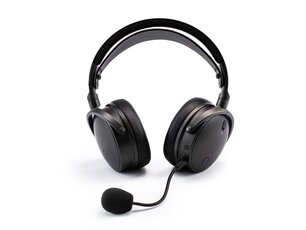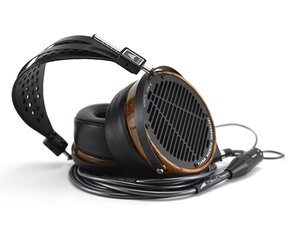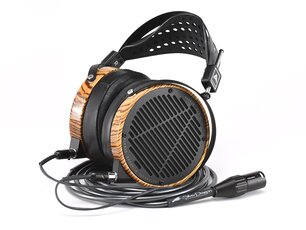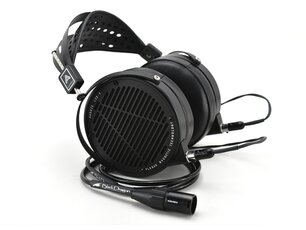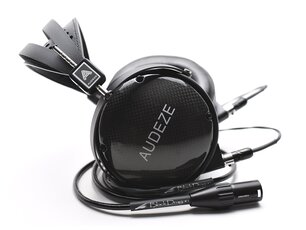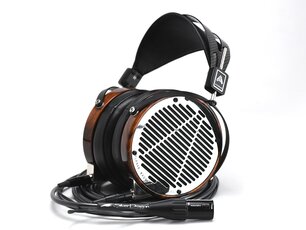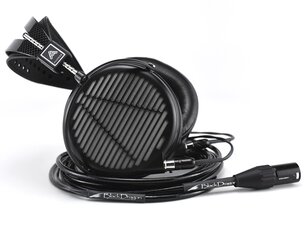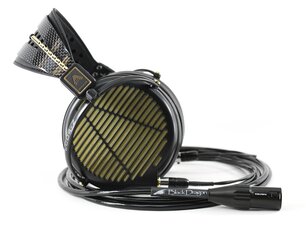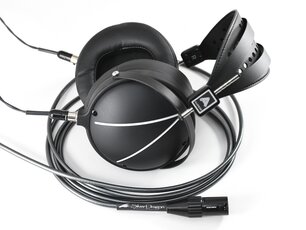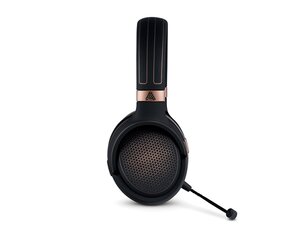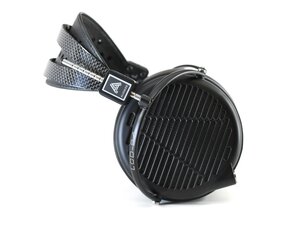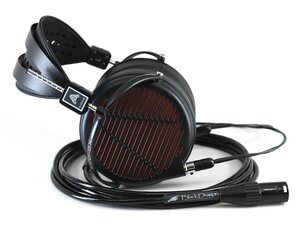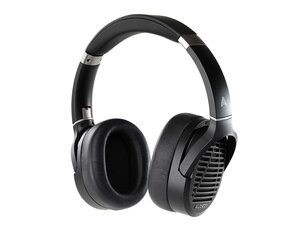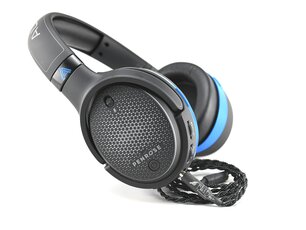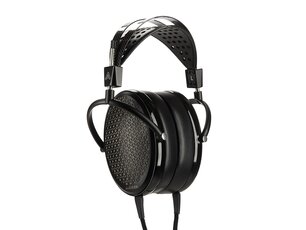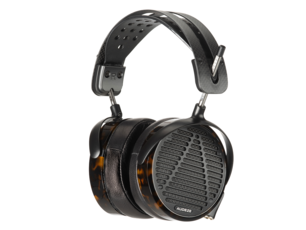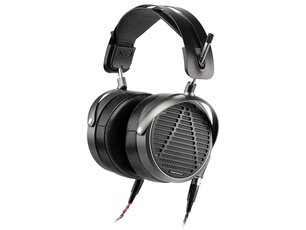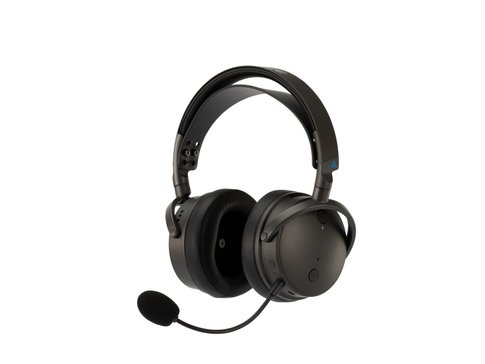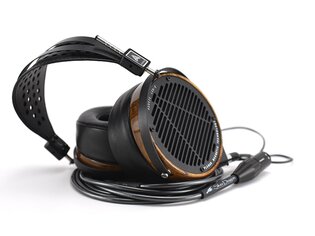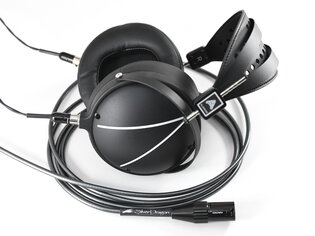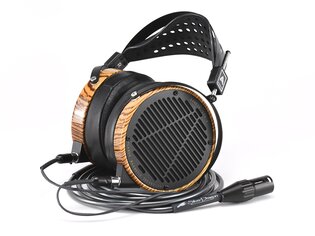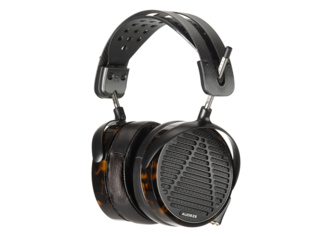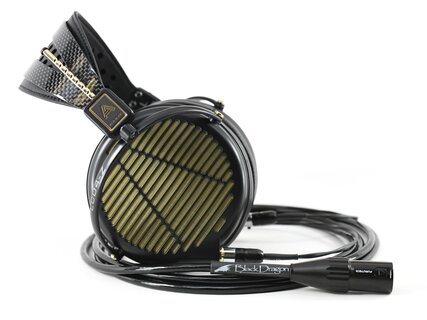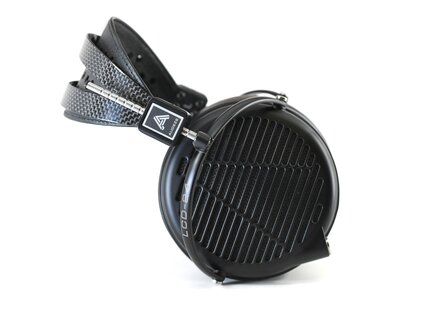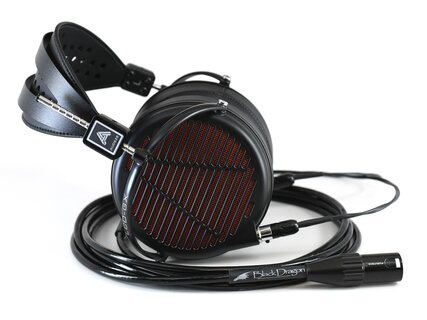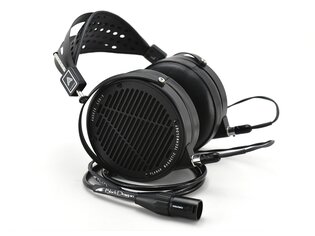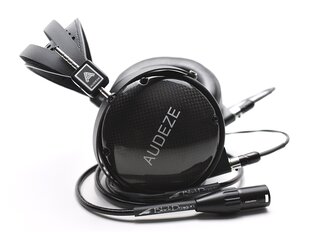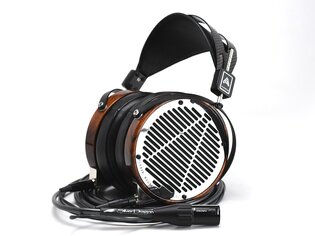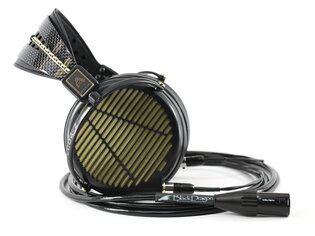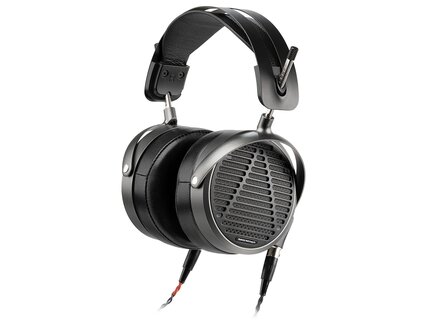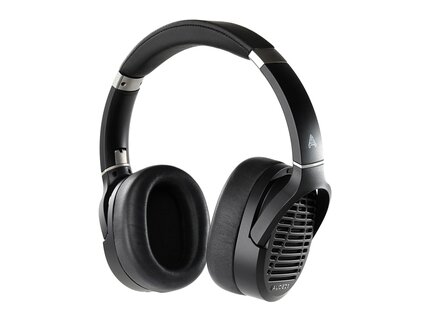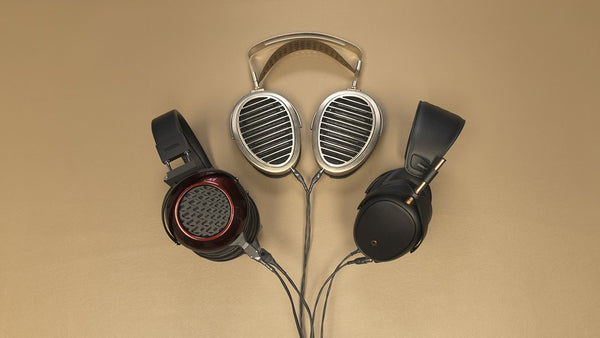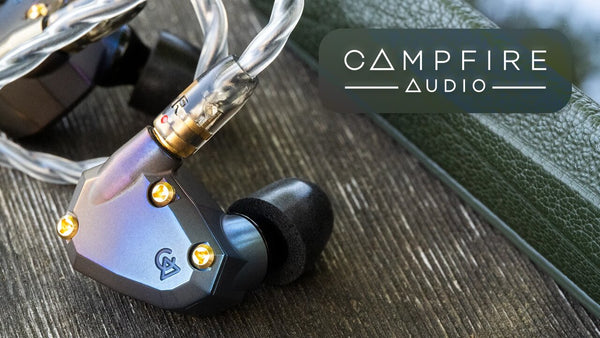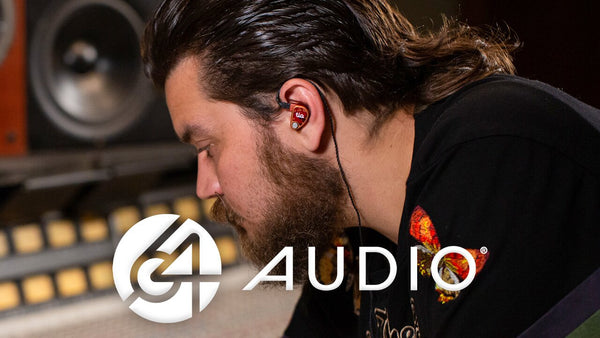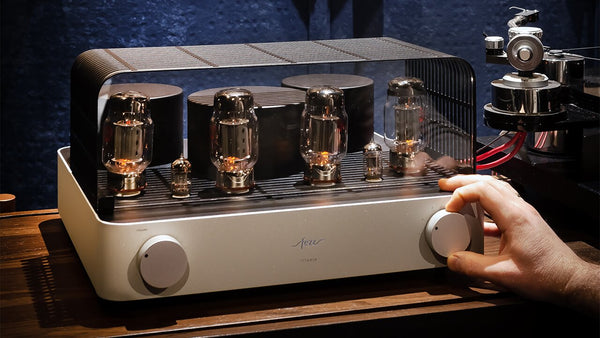The Audeze Headphone Guide

A Headphone for Every Personality
We're all looking for acoustic perfection. It's a daunting task, but it's a task that Audeze has taken to heart from the very beginning. Their first headphone, the Audeze LCD-2, received high praise worldwide; some even call it one of the greatest headphones ever made. Moon Audio was at CanJam Chicago when they showed us the first prototype. They were released later at CanJam RMAF and it was a monumental event. But they didn't stop there. When there's always room for improvement, so too i the pursuit of perfection.
And that's the beauty of Audeze: Innovation. Don't like a sound signature on one of their headphones? That's okay. There are plenty of others to try that will be more tailored to your listening style.
Don't know where to start? How about right here...
Welcome to our Headphone Guide for everything Audeze.
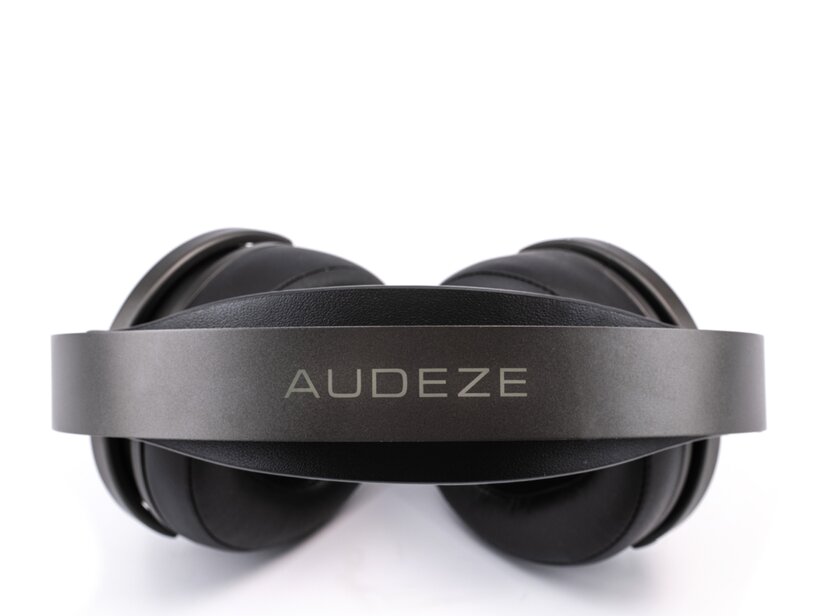
The Audeze Story
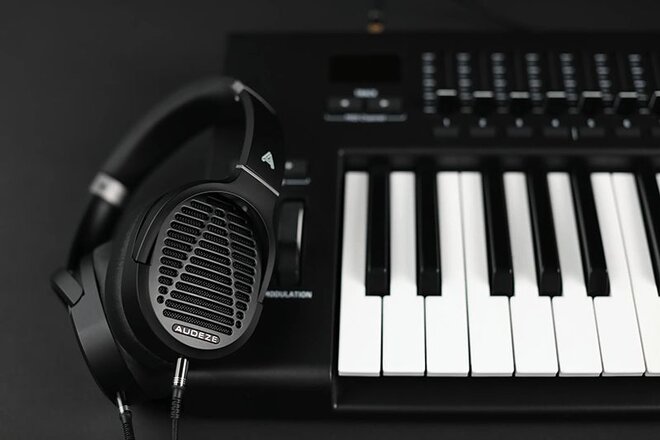
California Dreamin'
Like all brilliant startups, no place matches the inspiration and motivation of the inside of your garage. Like Steve Jobs and our very own Drew Baird, P.E., so too did Audeze find its very inception and hard working nights and weekends inside the confines of a garage. Audeze was started in 2008 by Sankar Thiagasamudram and Alexander Rosson. Making the first of the LCD series headphones in a garage, they soon grew to be a leader in planar magnetic driver technology for headphones. In 2015, Alexander left to create Rosson Audio Design and Sankar took over as CEO of Audeze. Sankar is an engineer with a Masters in Electrical Engineering from the University of Southern California. Before joining Audeze full-time in 2013 he helped develop several pioneering products in Digital Cinema. Today, Audeze headphones are produced and shipped from their headquarters in Costa Mesa, CA in the United States.
When Audeze released their first pair of headphones back in 2009, the Audeze LCD-2 Open-Back Headphones, they immediately set themselves apart as a leader in planar magnetic technology and sound fidelity. Critics raved about the LCD-2. But they didn't stop there. In 2012 Audeze released their next iteration, the Audeze LCD-3, which improved on a number of ergonomic features. The next year (in 2013) the LCD-X and the closed-back variant, the Audeze LCD-XC, was released. The X and XC were more forward-sounding counterparts to the LCD-2 and LCD-3. In 2016 Audeze released the third version of their main LCD lineup, the LCD-4, as their flagship reference premium headphone. Although now discontinued, even to this day, the LCD-4 is considered among the top reference headphones on the market.
The Audeze Timeline
Audeze's Planar Magnetic Technology
Audeze is one of the leaders in planar magnetic technology within the audiophile industry, implementing planar-magnetic driver technology in their headphone design, setting it apart from other competitors that use more popular dynamic cone drivers. Planar-dynamic technology is relatively less known as an audio application outside of audiophile circles, but are praised for their realism, presence, presentation and soundstage. So, what's the deal with planar-magnetic drivers versus the more common dynamic cone driver?
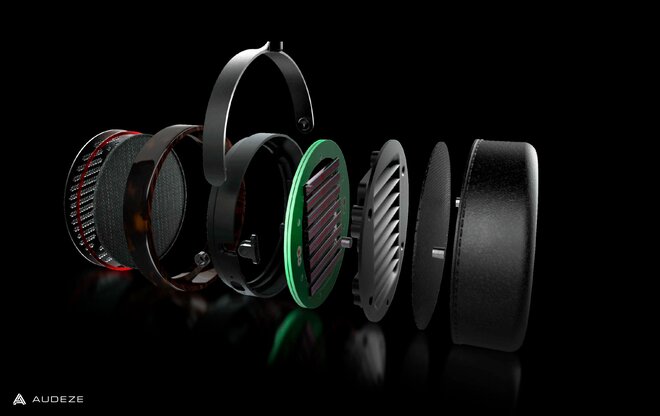
Most headphones use inexpensive, mass-produced dynamic cone drivers. These drivers are available in standard sizes from manufacturers and can be selected and rebranded based on the needs of the individual headphone company. Because this technology is relatively cheap and readily available, it’s a good option for those headphone companies looking to sell a lot of headphones at low cost. However, dynamic cone drivers can have serious inherent design limitations which means that what you’re saving in money, you’re losing in audio quality.
Dynamic drivers are usually activated by a voice coil that’s attached near the center of a diaphragm - most often a paper, plastic or metal cone. As electrical current is passed through the voice coil, force is exerted at the center of the diaphragm, causing it to move. This is what produces the sound you hear.
Ideally, the entire diaphragm would move in unison. However, because the driving force begins in the center and must travel outward, not all parts of the diaphragm begin moving at the same time. This can often result in breakup modes, also referred to as local resonances, which cause audible, measurable distortion and loss of resolution - especially at higher volumes.
-Audeze, Planar Magnetic Technology
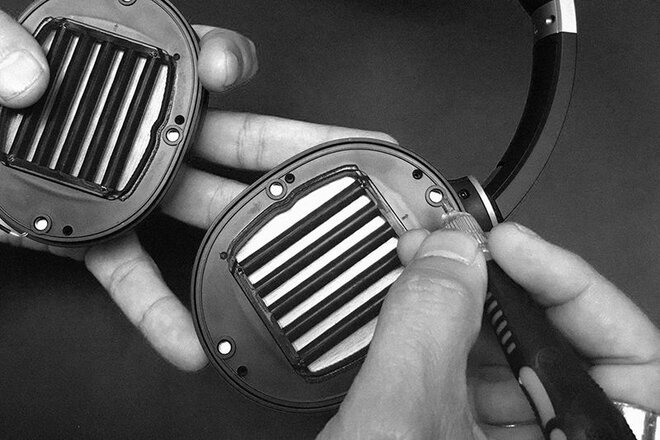
Featured: LCD-1 Headphones
Audeze's planar magnetic drivers are able to produce uniform driving force across the entire diaphragm, which allows it to move in a pistonic way and provides low distortion across the entire frequency spectrum. The other thing to note is that planar magnetic drivers are great at reproducing accurate low end. As Audeze notes, good bass reproduction requires effortlessly moving large volumes of air. This is best achieved with a diaphragm featuring a large surface area and a high degree of flexibility. Surface area determines the volume of air that can be displaced while flexibility allows for the effective reproduction of low frequencies. On the other side of the coin, dynamic cone drivers are typically much smaller stiffer, and require more force to recreate lower frequencies. The only way for a dynamic driver to do this is to increase the force or volume, both methods also increasing the risk of distortion and even damaging the driver itself.
Audeze has placed a large amount of time and resources into creating one of, if not the largest and most flexible planar magnetic drivers on the market today.
Sound waves are extremely complex. Every sound heard in a good recording, from the loudest cymbal crash to the faintest creak of a piano bench, is represented in a tumultuous pressure wave. For an immersive and realistic listening experience, the driver needs to be able to reproduce that wave faithfully, without missing any of the details. Like a sports car, the diaphragm needs to be nimble, have excellent control, and be able to accelerate and change direction on a dime.
The laws of physics governing this are pretty simple: Force = Mass x Acceleration. Acceleration defines the diaphragm’s ability to move rapidly. If the diaphragm has lower mass, it can have a much higher acceleration for the same force. Dynamic drivers use diaphragms that are orders of magnitude heavier and thicker than the ultra-light and thin diaphragms used in our planar magnetic drivers. As a result of their higher mass, dynamic drivers are simply not capable of accelerating as fast, or being as nimble as the planar drivers made by Audeze. The mass of the diaphragm used in dynamic drivers fundamentally limits their sonic performance, their ability to resolve and reveal details, and their transparency.
-Audeze, Planar Magnetic Technology
Diaphragms & Magnets
The next component we need to look at in the context of what makes planar magnetic driver technology more resolute than dynamic cone drivers are the diaphragm and magnets. These are two very important parts of the equation as they are the elements that help to produce sound.
The magnet creates a static magnetic field when powered. Plugging the headphones into a powered source like a headphone amplifier or even a computer will activate this. The electrical current passing through the diaphragm's voice coil interacts with the magnetic field, which fluctuates the suspended diaphragm back and forth. The movement of the diaphragm pushing and pulling causes pressure waves, which are therefore interpreted by your brain as sounds.
The diaphragm needs to be able to do this very fast in order to produce various frequencies. According to Audeze, this happens over 20,000 times per second to produce sounds in the upper range of human hearing.
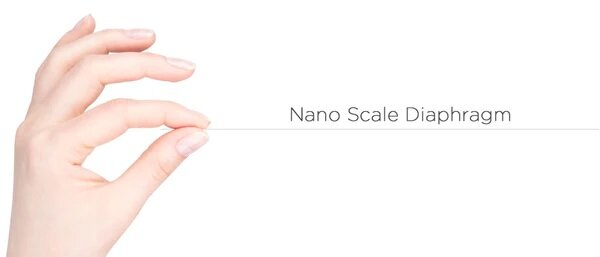
In a typical pair of headphones, the diaphragm is usually a cone of plastic, cardboard, or lightweight metal. Audeze’s diaphragms are completely different, and this is where that micron measurement comes into play: the diaphragms in our headphones are flat sheets of film that are orders of magnitude thinner than a human hair, and are so light that they actually weigh less than the air that’s being moved! That extreme weight reduction is a key factor in our headphones’ superlative transient response (see our tech article detailing transient response, transparency and resolution here). In short, transient response boils down to this: thin diaphragms mean less weight to move; less weight to move means less inertia of the diaphragm to overcome. The faster the diaphragms can change direction, the more detailed, accurate, and transparent the sound.
-Audeze, Diaphragms
The Audeze diaphragm is truly something special. As they will be quick to point out, not all planar magnetic drivers are created equal. Planar magnetic technology does not automatically guarantee an uniform magnetic force, otherwise known as flux, across the surface of the diaphragm. Audeze states on their site: "The force acting on the diaphragm is proportional to the amount of magnetic force being produced by the magnets, but the magnetic field is almost never uniform... Our engineers came up with a novel and patented solution: why not vary the width of the conductor so that it's wider where the magnetic field is stronger and thinner where the magnetic field is weaker? This would ensure that all parts of the diaphragm experience the same force; resulting in true pistonic motion. Thus the Uniforce voice coil was born."
Because of all this, Audeze's drivers have some of the lowest distortion levels in the industry among headphones.
Audeze Headphones Made Just for You
Why Do You Need Better Headphones?
Why would you settle for ordinary? People invest in what they love.
The question of why you need better headphones is one of the most important things you can ask yourself in the quest for your perfect sound in the world of audiophile headphones. Everything has room for improvement; it's in our very nature to seek perfection and at the same time our lot in life to never be able to achieve it. But the beautiful thing about headphones is that although improvement never leads to perfection, it always leads to more enjoyment. Your enjoyment is your investment when it comes to getting better headphones. Better headphones means better sound, and better sound means listening to your music like never before and falling in love with it all over again. So why would you NOT want to get better headphones?
"You'll hear us say this over and over: 'Everyone hears differently."

Audeze's company mission is to "create the best headphones in the world." But perhaps we might lend a slight addendum: "for you." They have continued to create and innovate their lineup of headphones, so much so that they are improving upon each iteration. For instance the Audeze LCD-2 and LCD-3 have very different sound signatures from the LCD-X and LCD-XC, so you're likely to prefer one signature over the other. You'll hear us say this over and over: Everyone hears differently. So at the end of the day, it's not about creating the best headphone in the world, because that headphone could have all the wrong properties based on your listening preferences. Audeze's real mission is to create the best headphones in the world....for you.
Let's learn more about what makes Audeze headphones so great as we continue below.
Audeze's mission is to create the best headphones in the world... for you.
Why Do Over-Ear Headphones Sound the Best?
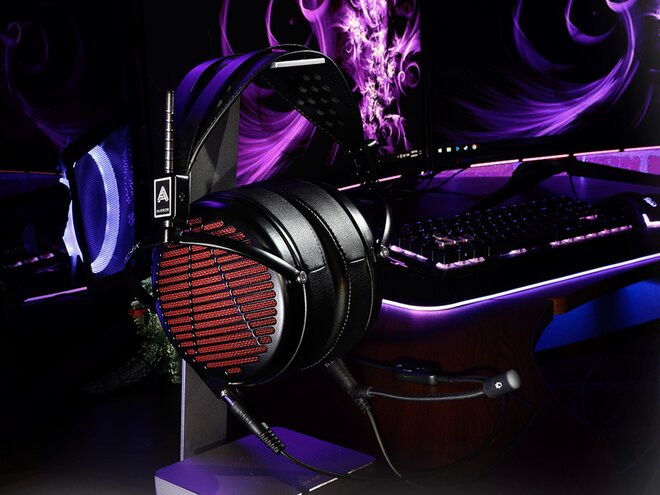
Over-Ear Headphones featured: Audeze LCD-GX
Many audiophiles prefer a "wider" sense of presentation compared to the "narrower" "in-your-head" sense of presentation that on-ear and in-ear headphones can deliver. On-ear and in-ear types lose the extra-dimensional "width" of over-ears due to their smaller form-factor, but focus on better mobility.
...where psychoacoustics are concerned, there are no right or wrong answers. There are only preferences and compromises; advantages vs disadvantages.
On the other hand, a "narrower" sense of presentation that's more "centered" in the forehead is usually achieved best with the smaller and more portable on-ear and in-ear fit-types. However, where psychoacoustics are concerned, there are no right or wrong answers. There are only preferences and compromises; advantages vs disadvantages.
Which Audeze Headphone is Right For Me?
Like everything, there are pros and cons to weigh in all the form-factors. For example, the over-the-ear design requires the ear-cones surrounding the wearer's ears to be large enough to not only surround the user's ears but also to isolate sound. Isolation is created when a tight "sealing condition" around the ears effectively prevents the sound from leaking out.
Sometimes, this over-the-ear design choice will come with a few drawbacks that could limit the flexibility and the availability of ergonomic scenarios best suited for the use of the headphone. Compared to "lighter" fit-types, this means over-the-ear headphones can typically have a heavier and bulkier weight to consider in their inherent designs. After all, "large" usually implies "bulky" and "heavy" materials all working together to both surround the wearer's ears and to create a solid sealing condition that isolates sound, effectively. Whereas Audeze headphones are certainly known for their "larger" and "heavier" headphone designs, they are also renowned for the sound quality and overall comfort as a trade-off. Are there bulkier headphones on the market? Of course. But most will argue that Audeze's design is the perfect marriage of weight, comfort and sound quality.
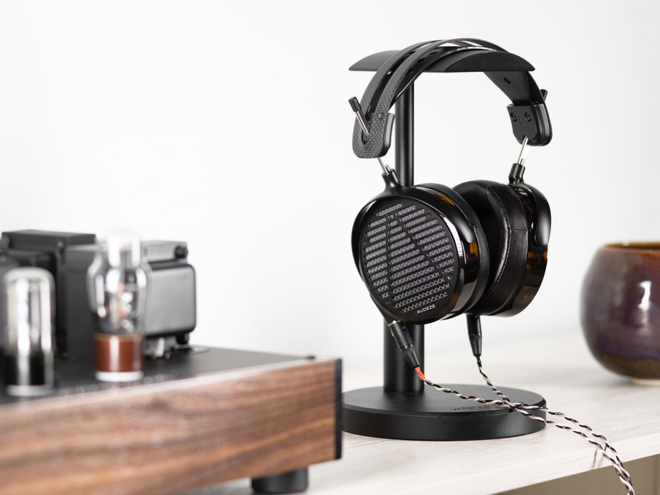
The Audeze Price Point:
Audeze has made it their mission to create tailored sound signatures based on various listening preferences. There is always room for improvement compared to the headphones you already have. And if you already have a pair of Audeze headphones, then chances are there's still room for improvement based on your specific listening preferences. And thankfully Audeze has provided a plethora of models in their lineup of headphones to choose from.
Why are there so many models?
The fact is that no two people hear the same. What might sound warm and lush to you might sound muddy and dark to another. It is just as important to know your listening preferences as it is to know what sound signature you prefer in your headphones. Audeze takes the philosophy that every person is different so the more options you have to choose from, the better the chances are that you'll find your true end-game audiophile headphone. And once you find it, nothing else will compare.
Entry-Level
Mid-Range
High-End
Flagship/Reference
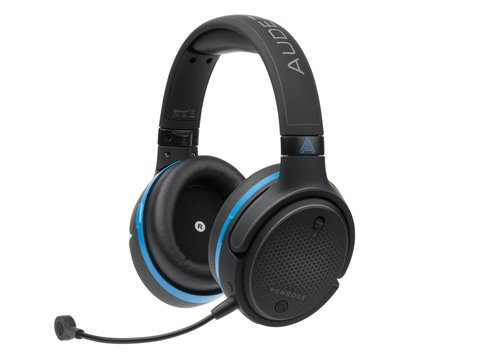
Audeze Penrose | Discontinued Legacy Product
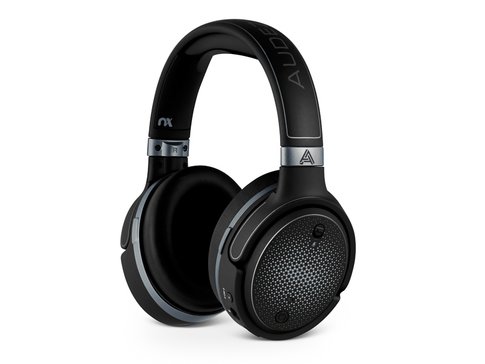
Audeze Mobius | Discontinued Legacy Product
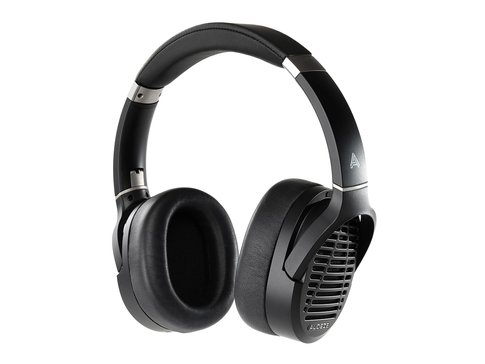
Audeze LCD-1 | Discontinued Legacy Product
Audeze Headphones: Ergonomics & Sound Signatures
Let's be honest, all of these headphones will be more than appropriate for critical listening at home. But for the sake of really distinguishing ergonomic scenarios where these headphones really shine we'll leave out duplicates in the "For Home" tab, with the understanding that all of Audeze's headphones would be recommended for at-home use.
For Home
For On-The-Go
For Po Audio
For Gaming
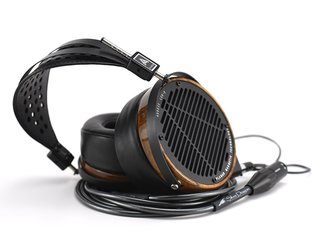
Model
LCD-2
Open / Closed
Open
Difficulty to Drive
Moderate
Ergonomic Scenario
Home, Critical Listener
Weight
580g / 595g
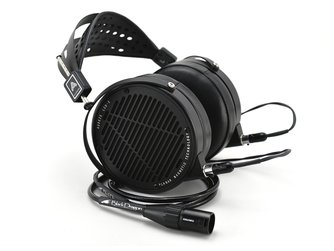
LCD-X
Open
Moderate
Home, Critical Listener / Studio
635g
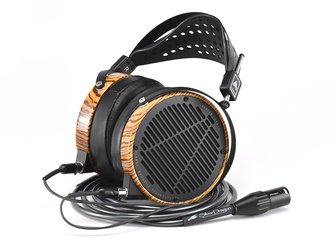
LCD-3
Open
Moderate
Home, Critical Listener
635g
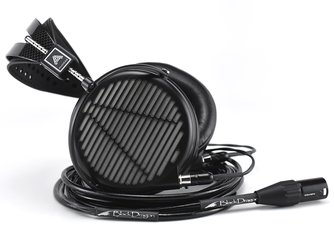
LCD-MX4
Open
Requires Less Power
Home, Critical Listener / Studio
600g
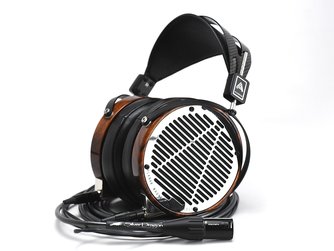
LCD-4
Open
Moderate
Home, Critical Listener
735g
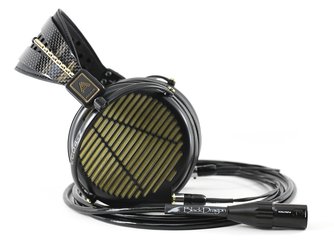
LCD-4z
Open
Requires Less Power
Home, Critical Listener
600g
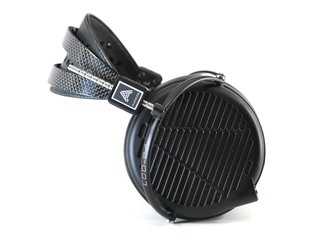
LCD-24
Open
Moderate
Home, Critical Listener
540g
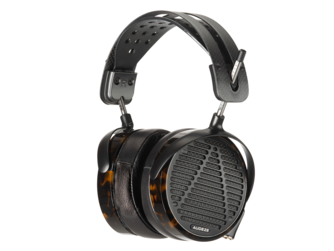
LCD-5
Open
Moderate
Home, Critical Listener
420g
So, which Audeze Headphone is the right model for you? As depicted in the table above, sometimes, the answer boils down to the demands of your ergonomic scenario.
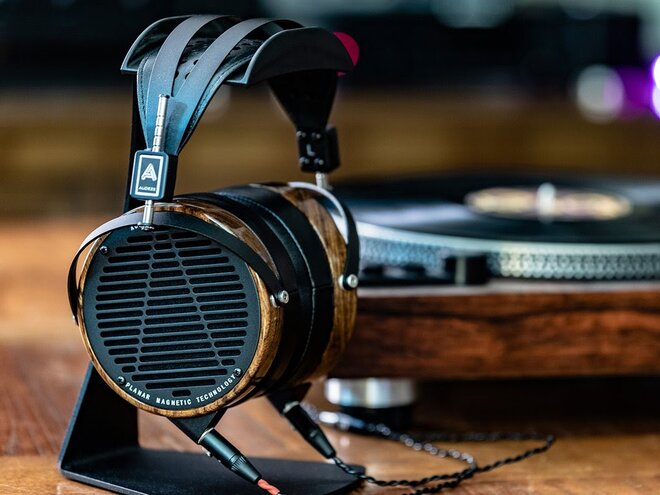
For example, if your goal is to listen to music predominantly in the privacy of your home, then open-back headphones should be on any home audio enthusiast's radar. Really any of the Audeze headphone lineup would work great in this ergonomic scenario, but more specifically the LCD-series open-back designs (LCD-2, LCD-3, LCD-4, LCD-X, LCD-MX4, LCD-4Z, LCD-24) will help you achieve your end-game the best at home or in the office, undisturbed.
On the other hand, if you're searching for the best portable headphone to use when on-the-go, then look no further than Audeze's closed-back headphones. The Audeze LCD-2C, LCD-XC and Maxwell closed-back headphones offer the best soundstage in a closed-back format.

Pictured: Actor Giovanni Ribsi wears his LCD-XC out in public.
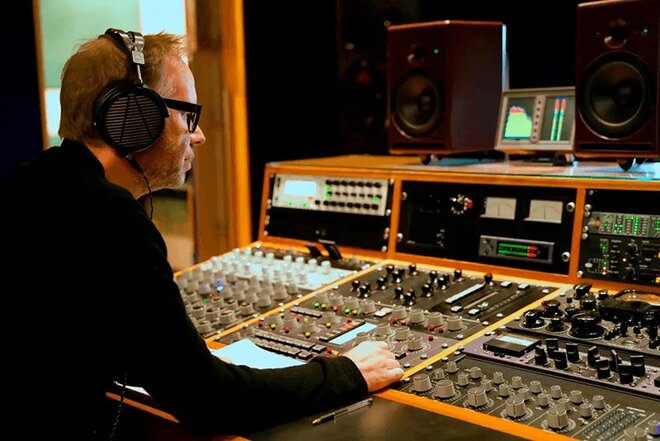
For mixing/mastering engineers or producers, the LCD-1 is the no-question answer for projects, requiring an honest reference headphone with a more neutral and flatter frequency response. The LCD-X and LCD-MX4 headphones are all great reference headphones that are preferred by studio engineers and producers from all over the world. All of these options meet the demands of the respective ergonomic scenarios at different price points, superbly.
For a more in-depth guide on everything there is to know about the advantages and disadvantages between closed-back and open-back headphones in general, and the ergonomic scenarios best suited for each, read our ultimate Closed-Back vs Open-Back Face-Off Guide to find out which style is the best for your ergonomic situation.
Sound Signature
Audeze has created a number of headphones each with their own specific sound signature. When developing headphones for a wide variety of customers, it's important to create enough options to cater to various listening styles and preferences. Each headphone is distinct and created in a way to bring out the very best in the music you listen to. A headphone made for you and your music. Let's take a look at some of the sound signatures below:
Click on each headphone name below to explore the sound signatures
CRBN Electrostatic
LCD-1
LCD-2 Closed-Back
LCD-2 Open-Back
LCD-3
LCD-4
LCD-4z
LCD-5
LCD-24
LCD-GX
LCD-MX4
LCD-X
LCD-XC
Maxwell
MM-500
Mobius
Penrose
Gaming
Audeze has been expanding its headphone product line a lot within the past few years. With the emergence of gaming as a new market trend, Audeze has released several gaming-oriented headphones with the Audeze Maxwell serving as their latest iteration. Audeze’s Gaming headphones have been considered some of the top in the gaming industry thanks to their state-of-the-art technology, design and remarkable sound quality that Audeze is known for in the audiophile community. Both the Mobius and the LCD-GX are very different gaming headsets from each other, but that's the beauty of them. Each one is designed with a specific ergonomic use or budget in mind for the consumer, so you can get the one that is best tailored to your gaming audio needs. Audeze shares this philosophy with their other headphone models as well; to help you find the right headphone for you.
Audeze Maxwell
After years of innovation in wireless gaming headset, the Maxwell is Audeze’s latest creation designed for serious gamers. The Maxwell features the latest technology in gaming headsets: Bluetooth 5.3 technology with support for LE Audio, LC3plus, LDAC codecs; Embedded Dolby Atmos, and ultra-low latency wireless so you can enjoy lossless-quality high-resolution audio. The Maxwell’s spatial audio transforms how you experience gameplay.
Most gaming headsets on the market are made with dynamic drivers, whereas the Maxwell features 90mm Planar Magnetic drivers that will deliver powerful bass and pinpoint precision. With the Maxwell’s you’ll get an analytical sound that’s perfect for serious competitive gamers. The neutral and balanced sound of the Maxwell is highly practical for games with subtle audio cues. Footsteps, distant gunshots, reload sounds, etc. will be enhanced so you can get a competitive edge over others.
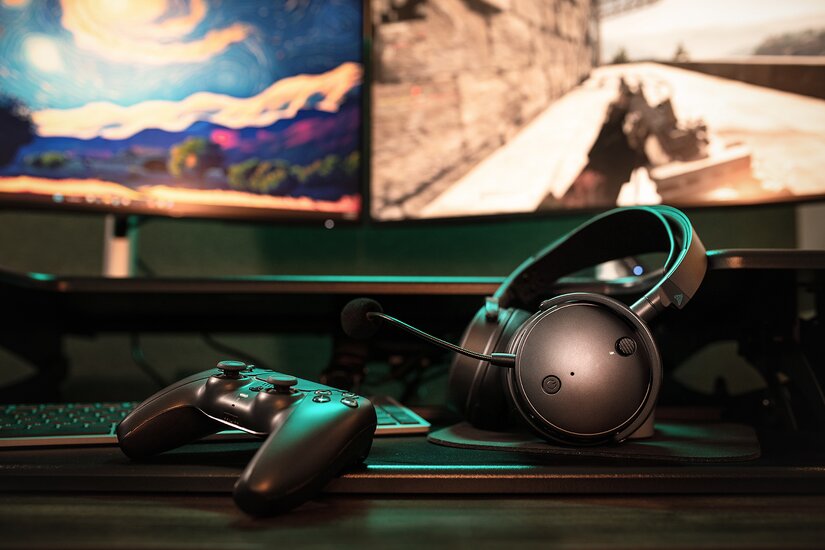
With a detachable boom microphone, the Maxwell doubles as a great wireless Bluetooth headphone so you can enjoy HiFi sound anywhere. The Maxwell has a more premium construction than its predecessors, the Mobius and Penrose, with more metals mixed in and larger ear cups. The planar magnetic drivers will deliver you a punchy, textured bass and dynamic, yet detailed sound to your music. With active noise cancellation technology, the Maxwell’s can double as the perfect companion for those times when you want to tune out the world and listen to your favorite music.
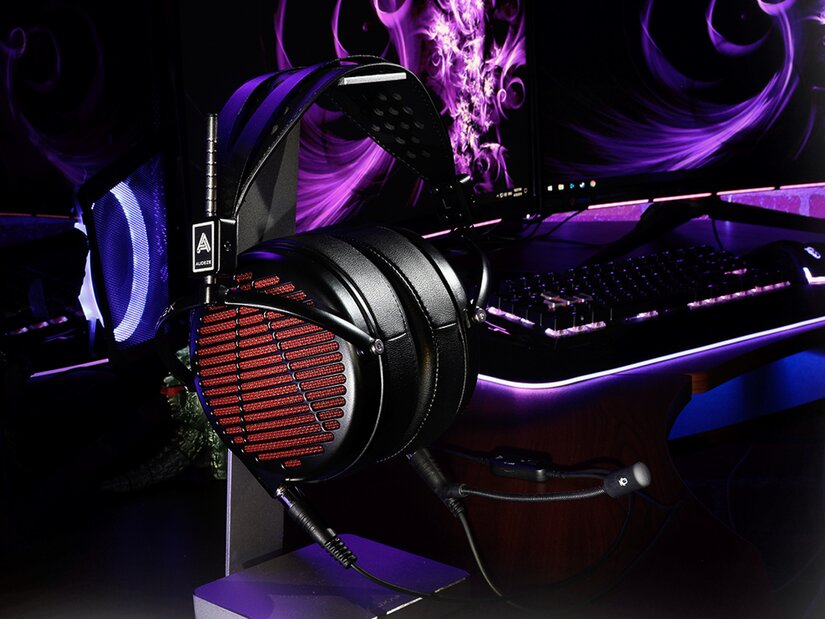
Audeze LCD-GX
The LCD-GX headphone takes a very different direction than the Mobius. consistent with their LCD line, Audeze keeps the "if-it-ain't-broke" philosophy and applies it to gaming. The LCD-GX is sonically similar to the LCD-X or LCD-24 in that it is a little more forward-leaning, which is great for getting all those tiny details out of your gaming sessions. Apart from that, they include a cable with a built-in microphone, the same boom microphone that they use on the Mobius in fact, and that's pretty much it. The LCD-GX is the no-frills audiophile experience for the seasoned gamer willing to cash out the money for an unparalleled and immersive experience.
Audeze knew they were onto something with the LCD-GX. Designing the cable the way they did allowed them to be able to use the cable with any LCD headphone, since they all have dual 4-pin mini-XLR jacks. Don't like the sound signature of the LCD-GX, or perhaps you have more expensive taste to move up the LCD ladder? Well, now you can with the LCD-GX stock cable sold separately.
Dragon Cables
Recommend Cable: Bronze Dragon
For headphones with portable applications like the Maxwell, we recommend pairing them with the Bronze Dragon Portable Headphone Cable for the best musical immersion on the go. Designed for portable headphones, the Bronze Dragon's UPOCC ultra-pure, single-crystal copper strands offer the most musical presentation for these headphones by adding more "warmth" with a bigger and fuller body. This adds bottom-end weight to the excitement without becoming lush or bloated. It's the best sonic match for the sound signature of the Mobius and features a flexible cable that's perfect for the on-the-go application of the headphone's design.

Pairs with: Audeze Mobius, Maxwell
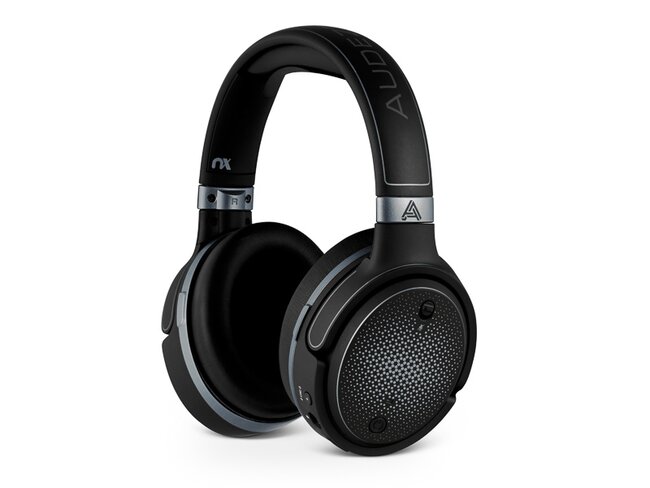
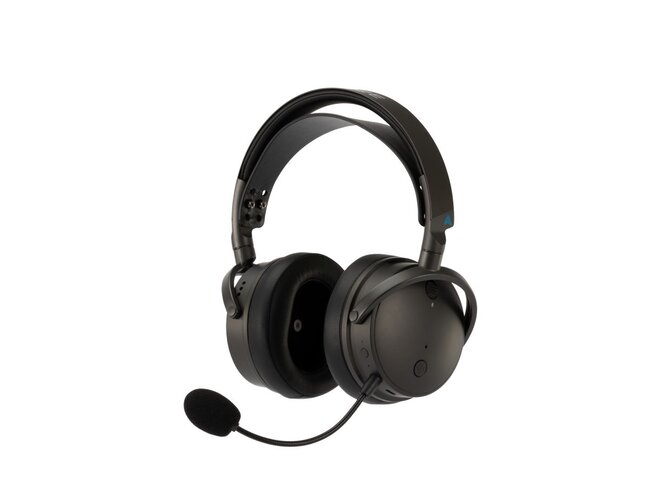
Recommended Cable: Silver Dragon Premium
The Silver Dragon Premium Headphone Cable for Audeze will add enhanced resolution and detail to your headphone. We recommend pairing this cable with Audeze headphones that are warmer in sound signature to help bring out additional details that the headphone signature will mask. For mastering engineers, audio engineers or anyone who appreciates listening critically, adding the Silver Dragon headphone cable to the more analytical sound signature headphones in the Audeze lineup is the perfect way to add detail and top-end energy to the more neutral soundstage with enhanced room for your music to breath. For example these are the best options for the LCD-2 & LCD-3 which have a warmer tonality.
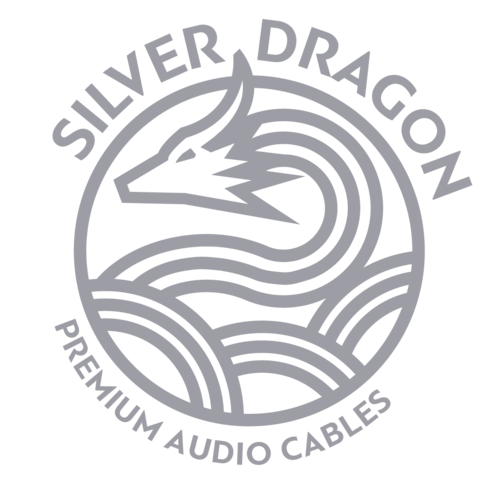
Recommended Cable: Black Dragon Premium
For the headphones that are on the more analytical side of the sound signatures, we suggest using the Black Dragon Premium Headphone Cable for Audeze to add more warmth and body to the music to help balance out some of the more top-end sizzle the headphones naturally provide. The Black Dragon headphone cable is extremely smooth with an enhanced low-end and voicing. Warm and musical, its the perfect match for headphones where a broad range of musical styles are played. Black Dragon pairs great with Audeze's more forward sounding headphones, and will round out the sound signature to provide you with a more "I'm there" feeling. This is the best option for the LCD-X, LCD-XC & LCD-MX4 which have a more forward tonality.

The Odyssey of Audeze
The fact that Audeze is synonymous with audiophile should tell you something. It means they know what they are doing and provide some of the best quality headphones on the market. The only daunting task is figuring out the best headphone option for you. We hope this guide has given you a little insight into Audeze and their excellent headphones. As always, if you have any questions feel free to Contact Us and we'll be more than happy to assist you in any way we can.
Haven't found your perfect headphones yet? Don't worry, it's just a matter of time before Audeze makes them.


